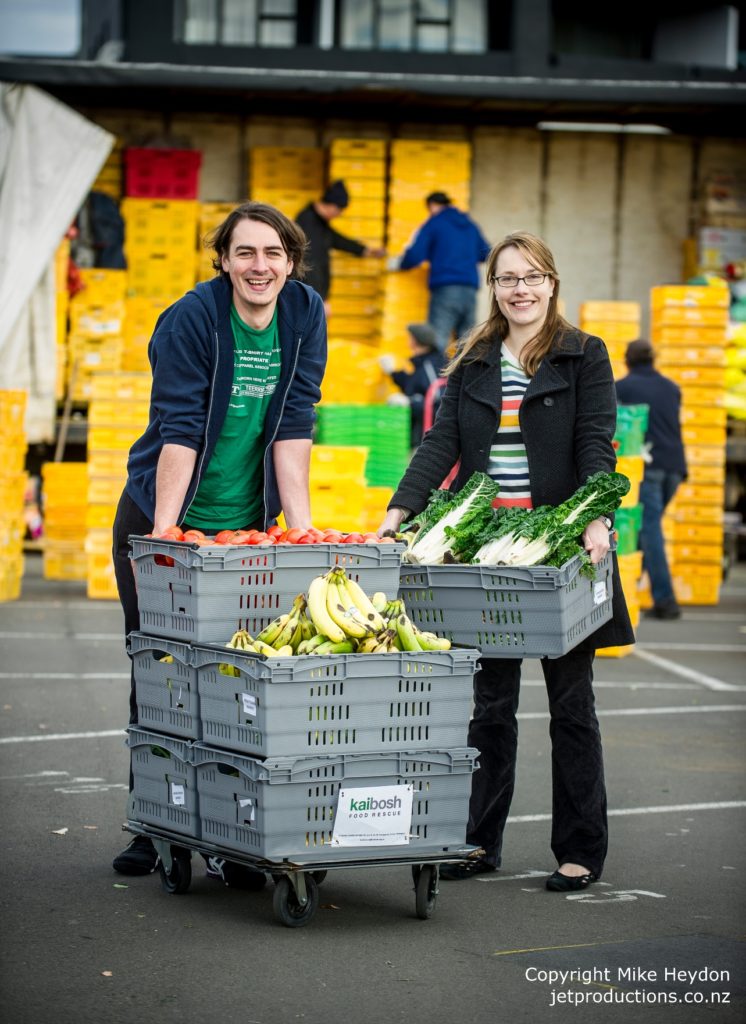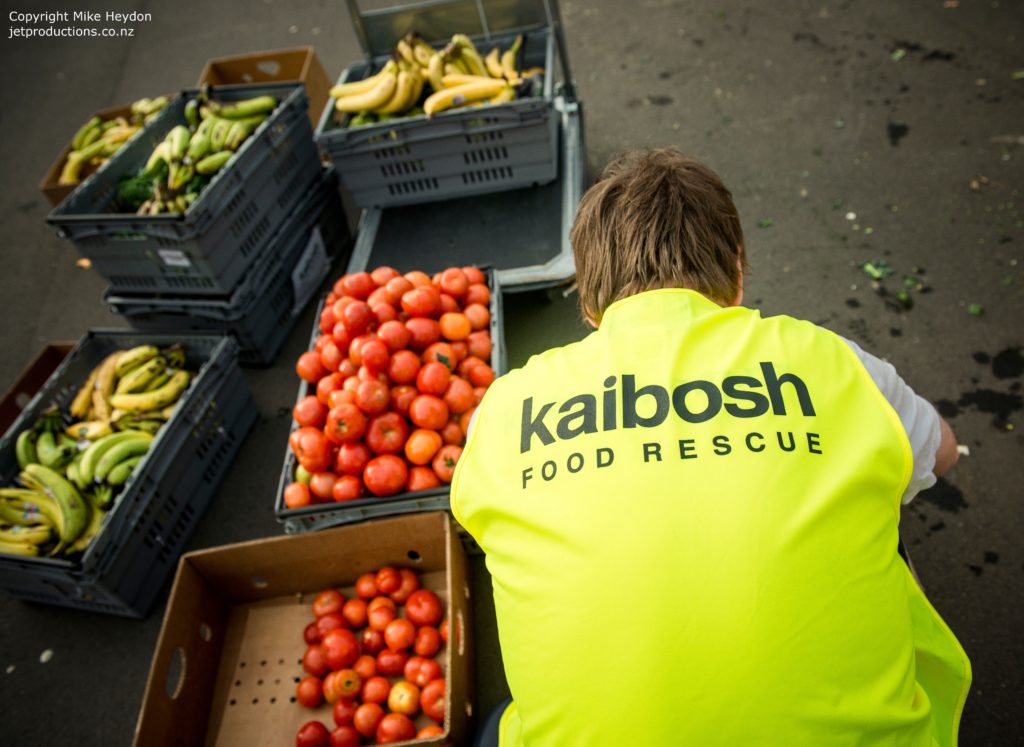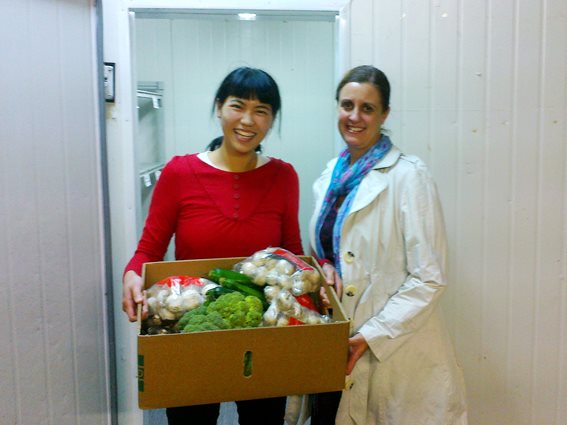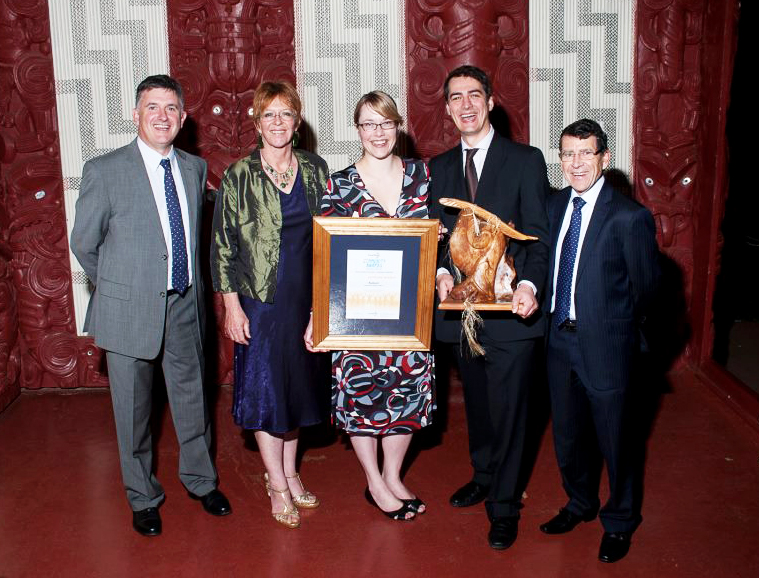Founder’s story
Robyn and George Langlands founded Kaibosh in 2008. It began organically out of an absurd problem; quality food was going to waste while many people in the Wellington community were going hungry.
Robyn shares the story of how Kaibosh became New Zealand’s first food rescue organisation and grew into a thriving charity, rescuing and redistributing thousands of kilos of food each month.
How did Kaibosh start?
I was volunteering at the Wellington Women’s Refuge in 2008. They had received a call from Wishbone offering their quality surplus food at the end of the day. Wishbone had tried to donate their food to different charities but no one was able to pick it up at the time they needed, after hours when their stores had closed.
I offered to pick up Wishbone’s food once a week. I’d collect it and take it to the Refuge safe-house for the women and children. It was donated the day before it expired, so it had to be eaten by the next day. There was so much food, too much for the Refuge, so I contacted Wellington City Mission and asked if they were in need of food. We then began donating a portion to the Mission as well.
I got thinking about the amount of surplus food Wishbone had and the struggle for charities to collect it, and how there must be other businesses who were having similar issues. I thought about what must have been happening to the food. Was it going to waste? What were other businesses doing to deal with this problem of excess food?
I looked into different organisations overseas and came across the concept of food rescue and redistribution. I discovered City Harvest in New York and Oz Harvest in Australia.
We looked around New Zealand to see if there were food rescue organisations, but we couldn’t find a dedicated service. Some charities were collecting surplus food, but mainly dry goods, not fresh food.
If others were rescuing and redistributing food successfully in other parts of the world, we believed we could do a similar thing in Wellington. We got in touch with Oz Harvest and they were kind enough to show us some of their processes.
We saw the need in Wellington and set out to create a service rescuing and redistributing food.
Kaibosh was created by happenstance then?
Kaibosh was born out of the environment. I happened to be at the Wellington Women’s Refuge when they discussed that Wishbone had excess food. Once we began collecting the food it seemed absurd that there was this problem of quality food going to waste, while so many people didn’t have enough to eat. It boiled down to a logistical issue. These businesses had food that they wanted to donate and there were lots of charities that needed the food, yet there wasn’t anybody to transport the food to the charities. Kaibosh was a practical and simple solution about moving food from one place to another.
What did the process of rescuing and redistributing food look like in the beginning?
Initially we’d collect food from Wishbone in our car once a week and store it in our fridge at home. We would sort the food and record the types of food we were collecting. I would drop it off at the Wellington Women’s Refuge and the Wellington City Mission the next day.
Collections became more frequent. We also wanted to provide fresh produce to charities, so we approached the Newtown Market to come on board.
We recruited volunteers quite early on to help with the pick-ups, and some friends and family to form a board. We became a charitable trust. I was chair of the board and George the deputy chair.
How did businesses respond to Kaibosh?
Many businesses were really positive about the idea. People didn’t want to see their food going into the rubbish.
There were a few businesses who were concerned around health and safety. They were worried if people ate donated food beyond its Use By date and got sick, there would be consequences for their business.
We worked to have the legislation changed because in certain countries there had been changes. Businesses donating food in good faith were protected from liability if someone got sick. We worked to get similar legislation in place in New Zealand, which was really helpful as well.
How did Kaibosh grow?
We quickly realised Kaibosh was going to be bigger than George and I, a few trustees and volunteers.
I was studying full-time and George was working full-time. We worked on Kaibosh out of hours, volunteering what we could, when we could. It became apparent it could be much bigger than that.
We needed a base to store the food. Someone to organise the logistics, contact more businesses to donate food and charities to collect the food, as well as organise volunteers.
We applied and got funding from the Wellington City Council and the Lotteries Commission. Funding allowed us to have money for rent for a premise (a place out the back of Wesley Church), purchase a van to collect food and to bring on our first employee, Li Ling Ho.
Li Ling was a brilliant first employee as she was very process orientated. Li Ling set up all the systems, how Kaibosh was going to work, how we were going to connect with businesses and charities, and manage volunteers. She set up a really good foundation for Kaibosh, which has then been built upon.
We eventually needed a larger space and moved into a building on Tennyson Street. There was a separate office, room for sorting and a cool room, which we got funding for. It just grew from there.
How did you make sure Kaibosh was sustainable?
We were clear from the start that we wanted to have a sustainable foundation. We wanted to grow sustainably and not run before we could walk. We were quite cautious in those early days of Kaibosh about when we would accept food donations and how quickly we could grow.
We also wanted it to be a professional service. When we had the money, we hired our first drivers. We wanted the food to be picked up on time and not give businesses any reason to put donating food in the ‘too hard basket’. It needed to be simple and easy for them. It was easy for businesses to throw food away, so our solution of coming in and picking up food needed to be simple, easy and reliable.
When you first started were you more motivated to reduce food waste or food poverty?
For me, it was more about reducing food poverty at the start. I was studying psychology and so I came at it from a people perspective. Being able to access enough healthy, nutritious food is a basic human right. If people don’t have enough to eat then how can any other issues be addressed?
Over time we became more aware of how other people were invested in the environmental aspect of it as well. Reducing food going to landfill was really important. As I got further along the journey the environmental aspect became more important to me as well.
What were the biggest challenges when you were starting out?
Resources; having enough money to buy the things we needed, such as a refrigerated van, money for rent and to employ people. Also, because we were doing it in our spare time, we had limited time to do what was needed. That was challenging.
It was also important to figure out how to grow the organisation in a sustainable way. My fear early on was that we’d start something and it would all fall over. The charities would begin to depend on the donations of food and we wouldn’t be able to sustain the service. Kaibosh needed to be sustainable.
What were some of the high moments?
A highlight was being named the Supreme Winner of the 2012 Trustpower National Community Awards. We attended the awards ceremony at the Waitangi Treaty Grounds and gave a presentation.
There were more than 20 other charities and organisations at the awards from around the country. It was amazing to be in the presence of so many people doing great work. We felt privileged to be there and then we won! It was validation of the idea of Kaibosh, that people really believed in it.
After the award we got a lot of media attention. We’d only recently hired General Manager Matt Dagger and he got flooded with requests from the media and groups around New Zealand wanting to set up similar organisations.
Why did you decide to make all the Kaibosh processes open source?
We wanted to share our resources with other groups to show what we’d learnt. They could then use that information to best meet the needs of their own communities.
Early on Li Ling put together information about how to start a food rescue organisation to share with others.
It was inspiring to see that there were people all around New Zealand who wanted to invest their time and energy setting up a similar organisation in their own community.
You stepped down as chair of the Kaibosh board in 2014 and George stepped down in 2016. Why did you decide to leave Kaibosh?
We had been involved with Kaibosh for many years at that stage. I had finished my PhD and clinical psychology training. I was working as a clinical psychologist and pregnant with our child Lucas.
For me, it had been really busy for a long time. I’d been studying and working part-time, doing research work, as well as Kaibosh. It was a lot of juggling. When I got pregnant I started thinking about what my involvement with Kaibosh would look like once I’d had Lucas. I felt I wouldn’t be able to invest the time and energy I’d want. I’d also been so busy doing so many things that I wanted to just focus on being a mum.
We decided it would be good for the board and organisation to have some new trustees, for people with new energy and time to take our place.
George stepped up to become the chair for continuity during the transition process, with the view of stepping down at a later stage. He was there for a while after I left and then stepped down.

George Langlands, Current Kaibosh Chair Amanda Burgess, Robyn Langlands, Lucas Langlands and Kaibosh General Manager Matt Dagger.
How did it feel to step away from Kaibosh?
It felt like the right time. The organisation was doing well, it was sustainable and in great hands with Matt. He had so much energy and enthusiasm. We had confidence it would continue to grow and develop.
For us, Kaibosh was about solving a big problem. It was an experiment to see if we could provide a solution. It was never about us as individuals. In that respect, it didn’t feel difficult to step down as our goal was always to build a sustainable food rescue organisation. Kaibosh has grown from strength to strength. We achieved what we set out to do.
There have been thousands of people who have invested in Kaibosh over the years. We happened to be the two people who started it, but it quickly grew to something far beyond us. There were so many people invested in Kaibosh, who were determined to keep it going. It didn’t take very long for Kaibosh to move from being our idea to an entity that stood on its own two feet, separate to us. We’re really proud that along with a lot of other people, as a community, we all succeeded in creating a sustainable food rescue organisation in Wellington.
We’d love to have you with us as we work towards zero food poverty, zero food waste in Greater Wellington. Be a Kaibosh Food Rescue Hero!
Find out more








